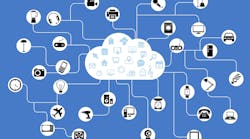An August blog from CABA News entitled, Top IoT Sensors For Building Owners, starts on the premise that as "a fundamental building block of intelligent infrastructure, IoT sensors are responsible for capturing the abundance of data that buildings and their occupants generate on a daily basis."
CABA's blog further observes that "all that data holds the key to an ocean of actionable insights, depending on the [particular] business challenge" to be solved.
To learn how most building owners are leveraging these rich data streams currently (and what opportunities that presents for software vendors) CABA goes on to interview Nick Stefanidakis at SpaceIQ, a CABA member, and Ibrahim Yate at research and advisory firm Verdantix, about the top IoT sensors being used currently, and what salient qualities customers are most requesting from IoT vendors in terms of sensors.
As reported by CABA:
Both Yate and Stefanidakis agree that one of the most popular applications for IoT sensors now is occupancy management for the workplace [...]
As Yate points out, COVID has prompted greater concern about building health: “A lot more corporations want to measure the quality of the air—especially in high-profile buildings like headquarters—and reassure clients and visitors that the local environment is being kept in good condition.”
To do that, some sensors are being linked with HVAC systems to monitor the air quality, even measuring the cleansing of the air particles for an extra layer of protection.
Yate also believes that, in the future, there will be tougher laws around HVAC operation: “If companies want to demonstrate compliance with that, they might start using sensors.”
Stefanidakis notes that some occupancy sensors can also do some environmental monitoring—CO2, noise, lighting, and temperature: “Temperature is the most common complaint from employees—it’s either too hot or too cold. If you can measure the real temperature versus the set points you have set in the HVAC system, then you can begin to understand how your building responds to real-time conditions and occupancy load."
The interview also includes a discussion of IoT sensor options for energy management, as well as passive infrared (PIR) and camera sensors.
In terms of choosing IoT sensor products for future planning, CABA adds that Yate’s research "has shown that the workplace and space management software market continues to experience high growth rates, with a list of participating firms that includes (but is not limited to): Accruent, AREMIS, Brivo, eCIFM, essensys, FM:Systems, FSI, Honeywell, IBI Group, IBM, Infogrid, iOFFICE, JLL, Locatee, MRI Software, Nuvap, Nuvolo, Openpath, Planon, Rapal, Ricoh, Schneider Electric, ServiceNow, Siemens, SpaceIQ, Spacewell, Spica Technologies, Tango, Thing Technologies, ThoughtWire, VergeSense and WeWork."


